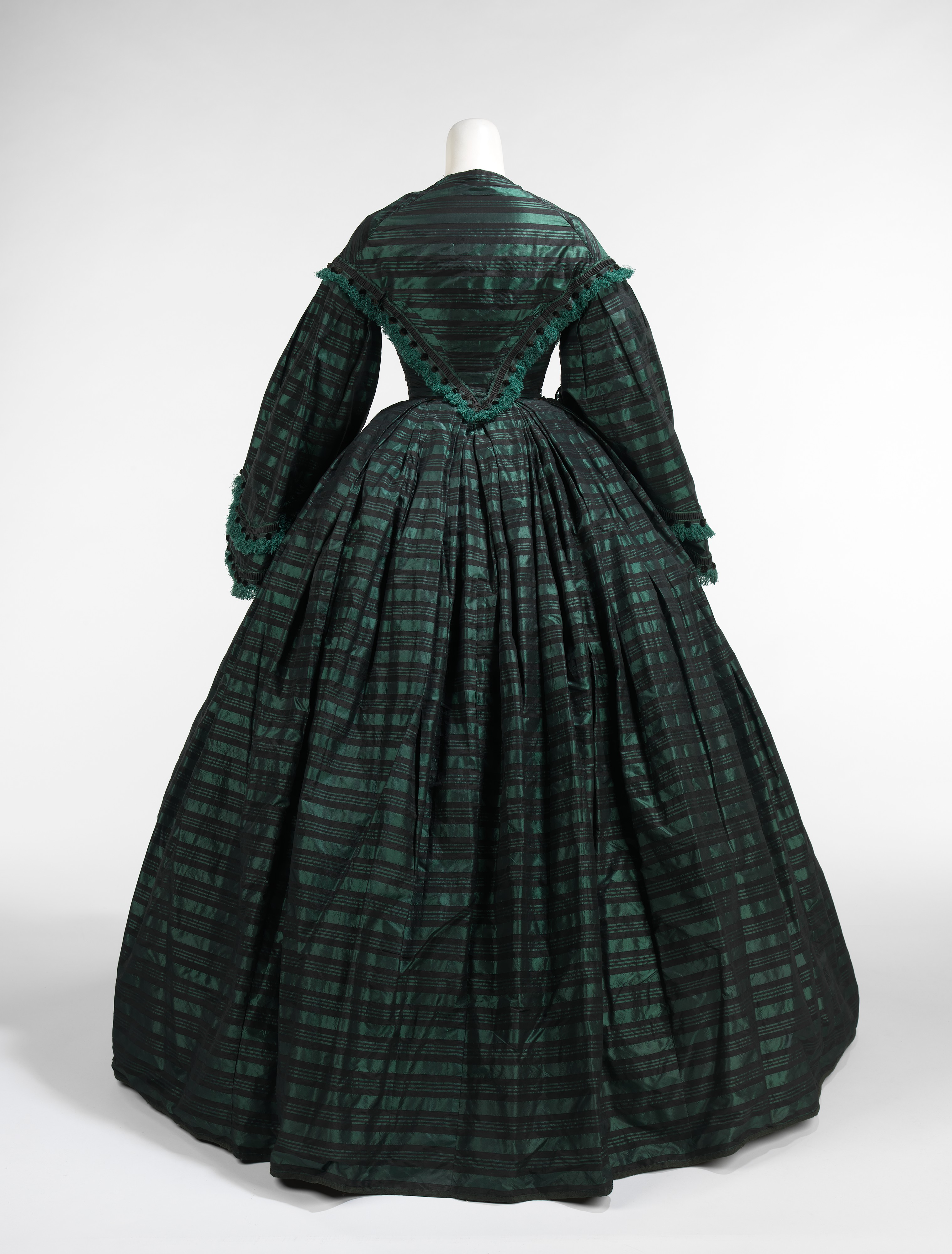Walking dress
Not on view
This is a sophisticated walking dress with ties to pull the skirts up to ankle length, which allowed the wearer to walk comfortably. It was common in the 1860s for the length of the skirt to be adjusted for walking by being pulled up in ribbon loops. This would create puffiness at the back where more length generally had to be adjusted from the train. The puffing at the back eventually led to the back puff of the bustle silhouette which followed in the later 1860s. The typical 1860s pagoda sleeves represented here are particularly elegant with classy ruched inner bands, unlike the typical box pleating normally used for such decorative purposes.
The female silhouette of the middle of the 19th century consisted of a fitted corseted bodice and wide full skirts. The conical skirts developed between the 1830s, when the high waist of the Empire silhouette was lowered and the skirts became more bell shaped, to the late 1860s, when the fullness of the skirts were pulled to the back and the bustle developed. The flared skirts of the period gradually increased in size throughout and were supported by a number of methods. Originally support came from multiple layers of petticoats which, due to weight and discomfort, were supplanted by underskirts comprised of graduated hoops made from materials such as baleen, cane and metal. The fashions during this time allowed the textiles to stand out because of the vast surface areas of the skirt and a relatively minimal amount of excess trim.
This image cannot be enlarged, viewed at full screen, or downloaded.
This artwork is meant to be viewed from right to left. Scroll left to view more.




